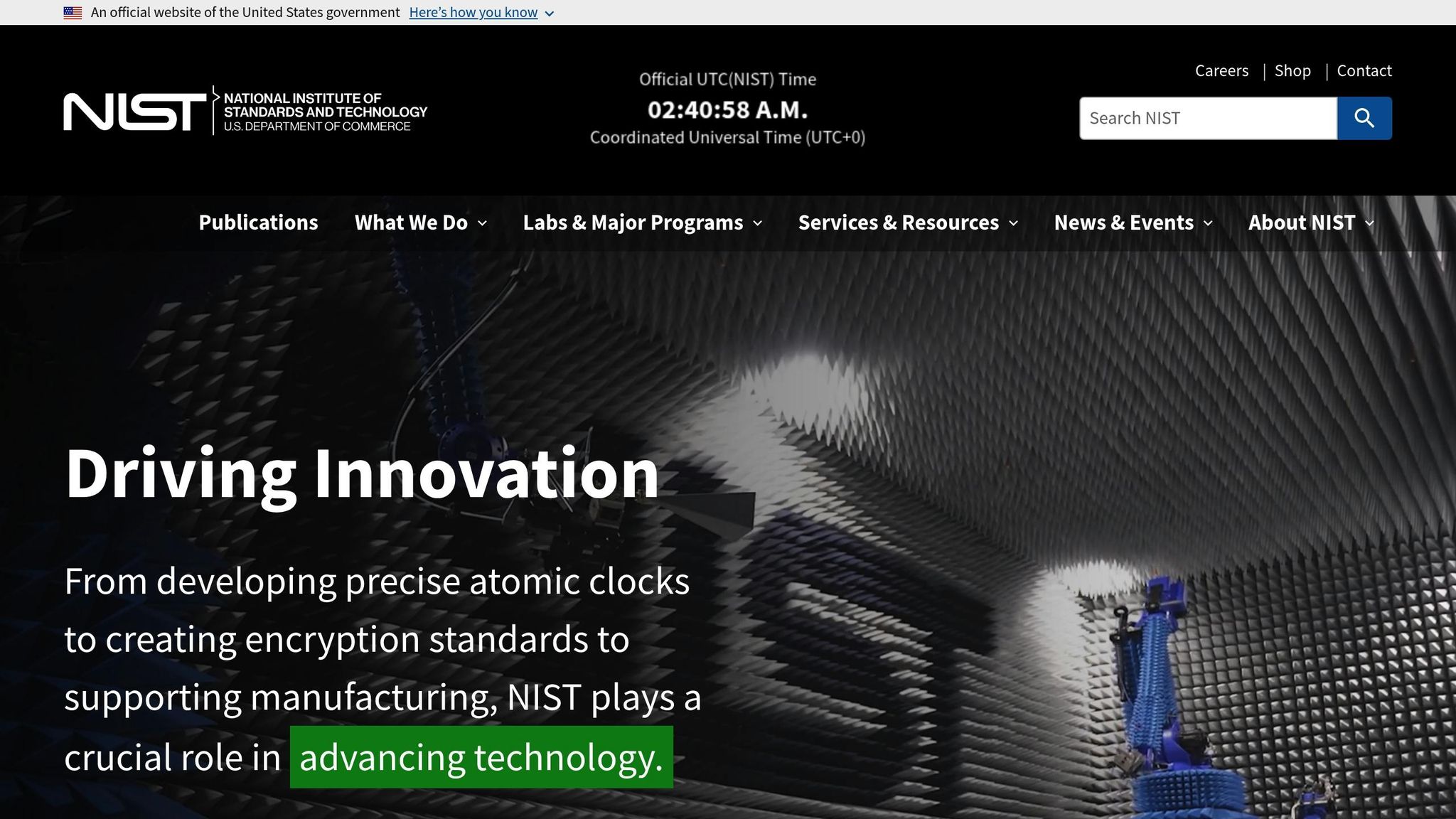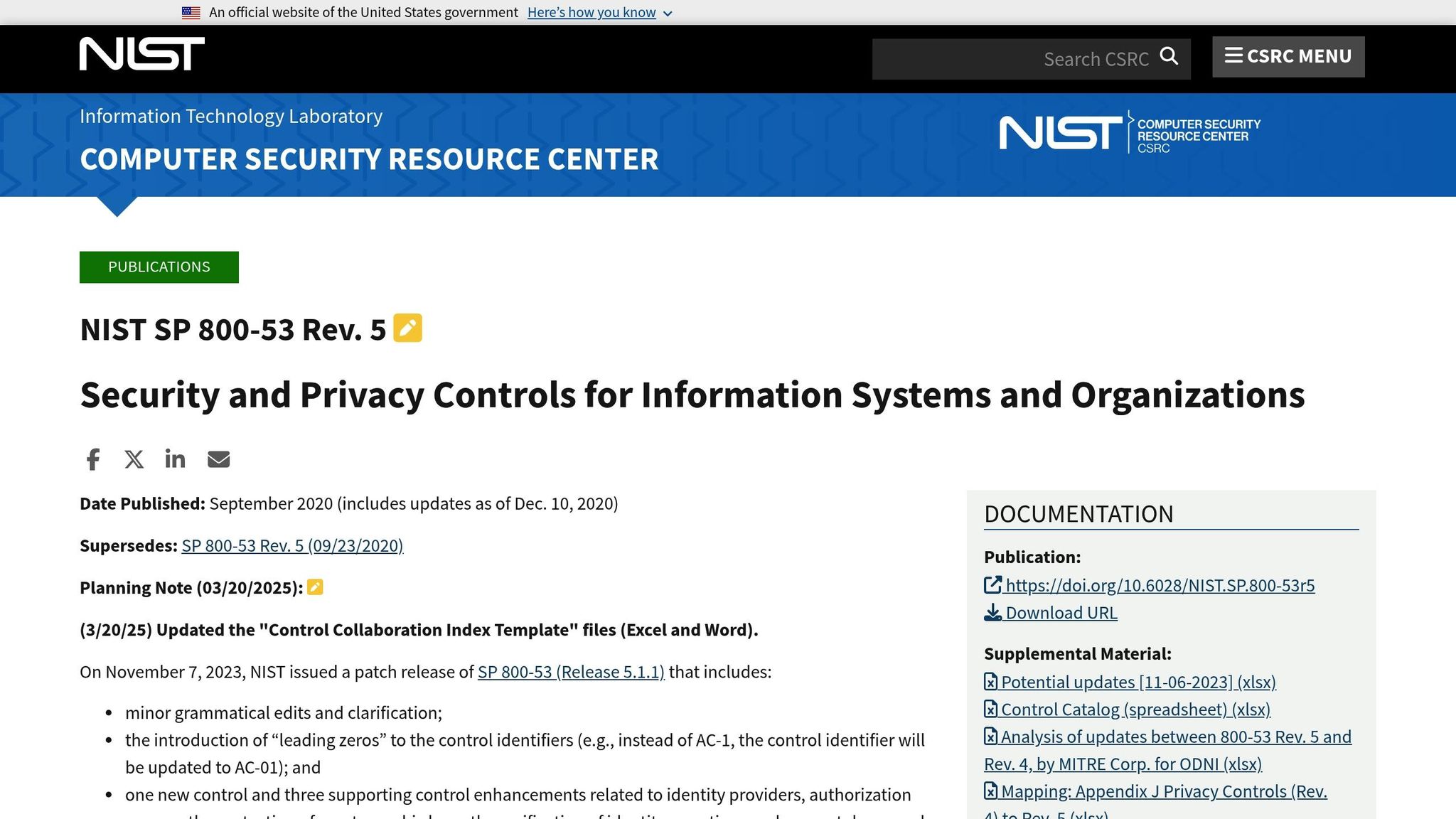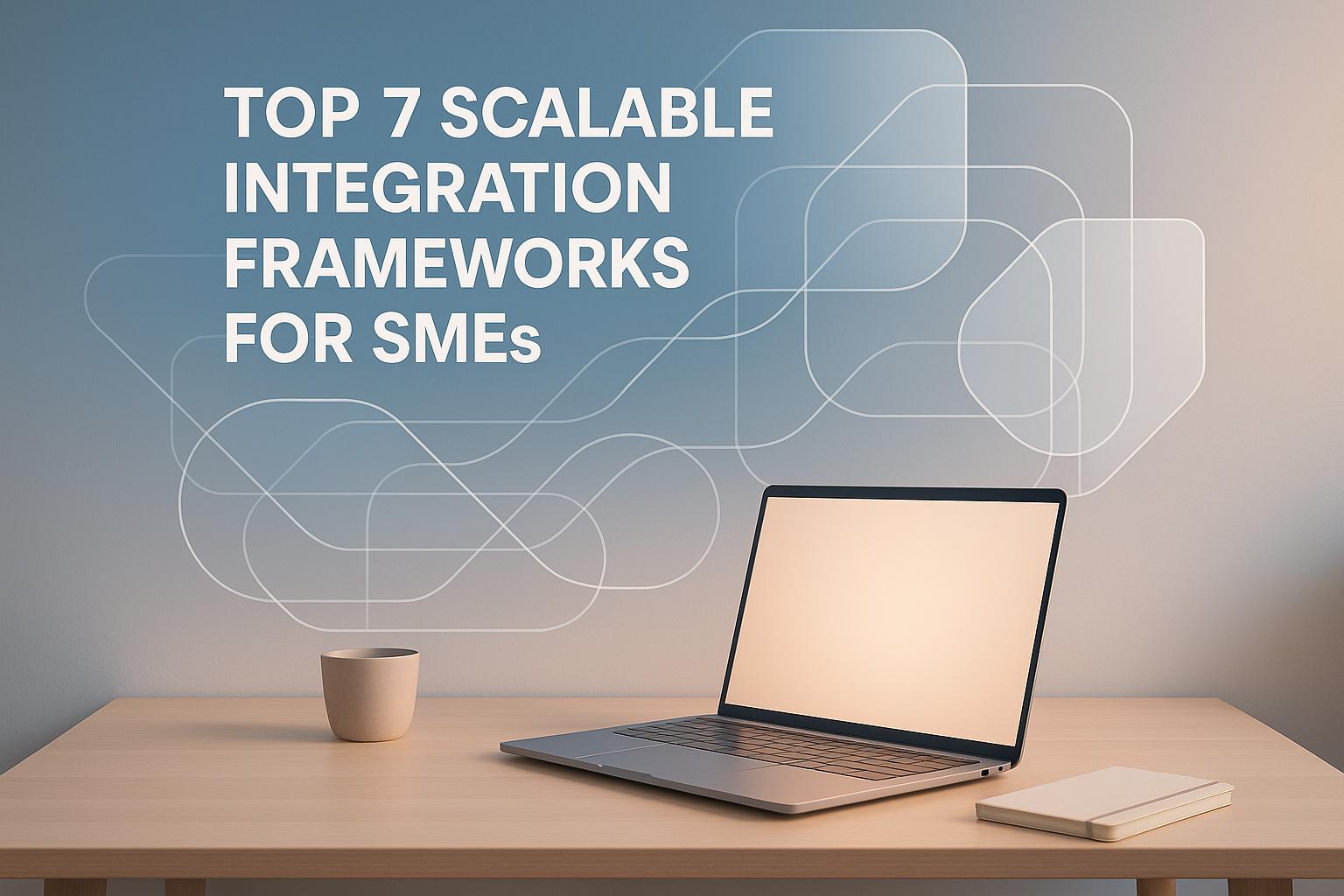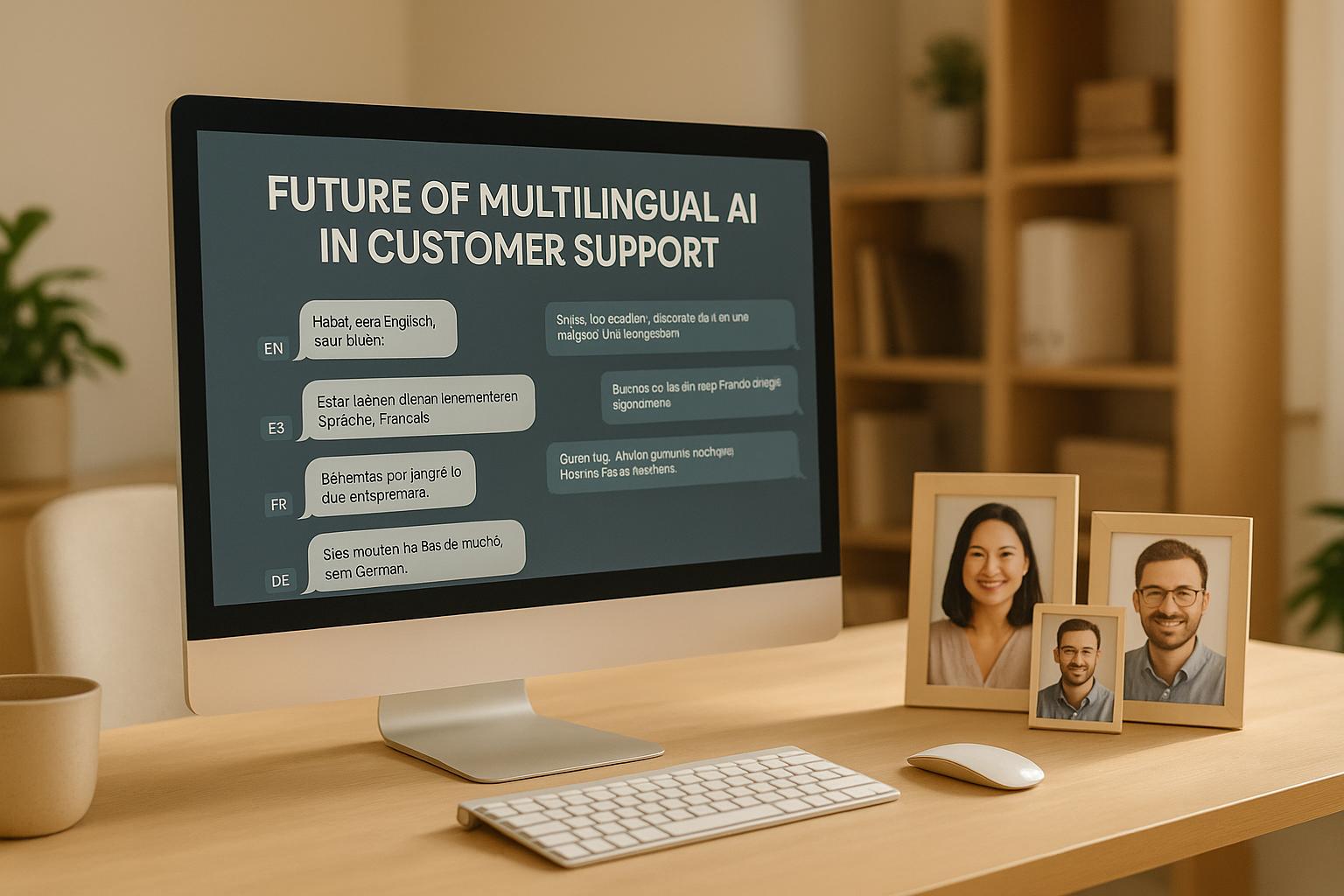Small and medium-sized enterprises (SMEs) face growing risks from cyber threats. NIST SP 800-53, a framework originally designed for federal agencies, offers a structured approach to improve cybersecurity. By focusing on relevant controls, SMEs can protect sensitive data, meet regulatory requirements, and even access new business opportunities, like government contracts.
Key Takeaways:
- What is it? NIST SP 800-53 is a catalog of security controls addressing risks like data breaches, encryption, and incident response.
- Why it’s useful: It helps SMEs secure systems, comply with regulations, build trust, and reduce risks.
- Challenges: Implementation can be complex and resource-intensive, requiring skilled staff and ongoing updates.
- How to start: Perform a risk assessment, prioritize critical controls, and use tools like automation or managed services to simplify the process.
Quick Steps for SMEs:
- Identify your business's most critical assets.
- Select a baseline (Low, Moderate, or High impact) based on your needs.
- Focus on easy-to-implement controls like multi-factor authentication and encryption.
- Use external resources (e.g., consultants, free NIST tools) to reduce complexity.
By adopting and tailoring this framework, SMEs can strengthen their defenses and stay competitive in an increasingly digital world.
NIST 800-53 Small Business Assessment

Key Encryption Standards in NIST SP 800-53

NIST SP 800-53 leverages the System and Communications Protection (SC) control family to establish cryptographic measures that align with federal standards. Two specific controls highlight its approach to safeguarding data.
Encryption for Stored and Transmitted Data
To protect sensitive information, NIST SP 800-53 outlines two critical controls:
- SC-13: Cryptographic Protection mandates the use of cryptographic methods defined by the organization, ensuring compliance with federal laws, policies, regulations, and standards.
- SC-8: Transmission Confidentiality and Integrity focuses on securing data during transit, safeguarding it as it moves through networks.
Together, these controls tackle the complexities of protecting both stored and transmitted data, ensuring robust security measures are in place.
Benefits and Challenges of NIST SP 800-53 for SMEs
NIST SP 800-53 brings both advantages and hurdles for small and medium-sized enterprises (SMEs). As discussed earlier, adopting security measures designed for federal use is increasingly important in today’s competitive landscape. By weighing these benefits and challenges, business leaders can make smarter decisions about their cybersecurity strategies. Let’s dive into what makes this framework both a powerful tool and a complex undertaking for SMEs.
Main Benefits for SMEs
Stronger cybersecurity measures are at the core of NIST SP 800-53. This framework doesn’t just focus on IT systems - it addresses vulnerabilities across all areas of a business. Companies that implement these controls often see noticeable improvements in how they detect, respond to, and recover from cyber threats.
Building customer trust becomes a key advantage. In a market where security is a top concern, being able to show adherence to high-level security standards can help SMEs stand out. This not only helps win contracts that might otherwise go to larger competitors but also strengthens long-term relationships with clients and improves overall brand reputation.
Access to government contracts is another major draw. Federal agencies and their contractors increasingly require subcontractors to meet specific cybersecurity standards. By aligning with NIST SP 800-53, SMEs open the door to bidding on lucrative government projects that may have been out of reach before.
Streamlined regulatory compliance is a side benefit. Since the framework aligns with many industry regulations, it can simplify the process of meeting multiple compliance requirements. This reduces both the complexity and the costs associated with managing various standards.
Common Implementation Challenges
Limited resources are a frequent hurdle. Implementing NIST SP 800-53 requires investment in skilled personnel, specialized tools, and ongoing maintenance - all of which can strain the budgets of smaller businesses. The upfront costs can feel daunting, especially when the benefits aren’t immediately visible.
Complex technical requirements can overwhelm SMEs without dedicated IT security teams. The framework includes hundreds of controls, each with detailed guidance and assessment protocols. For businesses lacking in-house expertise, interpreting and applying these controls can be a significant challenge.
Temporary operational disruptions are another concern. Rolling out new security measures, updating systems, and training employees can slow down day-to-day operations. SMEs, often operating with lean teams and minimal redundancy, may find it hard to manage these disruptions.
Ongoing maintenance demands add to the long-term commitment. NIST SP 800-53 isn’t a one-and-done solution. It requires continuous monitoring, updates, and assessments, which can be resource-intensive. Many SMEs underestimate these recurring costs when planning their cybersecurity budgets.
Benefits vs. Challenges Comparison
Here’s a side-by-side look at the key benefits and challenges SMEs face when adopting NIST SP 800-53:
| Benefits | Challenges |
|---|---|
| Stronger Security: Comprehensive protection against cyber threats and data breaches | High Costs: Significant upfront investment in tools, training, and personnel |
| Customer Trust: Improved credibility with clients and partners through demonstrated security practices | Resource Limitations: Insufficient IT staff and budget for implementing complex controls |
| Government Contracts: Eligibility for federal projects requiring NIST compliance | Technical Complexity: Hundreds of controls requiring specialized expertise to implement effectively |
| Simplified Compliance: Easier alignment with multiple industry regulations | Operational Disruptions: Temporary slowdowns during implementation and updates |
| Competitive Edge: Differentiation from competitors without formal security frameworks | Ongoing Maintenance: Continuous monitoring and updating requirements |
| Risk Mitigation: Reduced liability and lower insurance premiums | Employee Training: Need for extensive training to ensure proper adoption |
Balancing these benefits and challenges is essential for SMEs aiming to adopt NIST SP 800-53 effectively. By understanding the trade-offs, businesses can better plan their approach and maximize the value of this robust security framework.
How SMEs Can Implement NIST SP 800-53
Turning an understanding of NIST SP 800-53 into action can seem daunting, especially for small and medium-sized enterprises (SMEs). But here's the good news: you don’t need to tackle all 1,000+ controls at once. The key is to prioritize based on your business’s unique risks and needs. By creating a tailored roadmap, you can align your efforts with your size, budget, and security priorities.
Performing a Risk Assessment
The first step is to focus on what’s most critical to your business. A solid risk assessment helps you identify which systems, data, and processes need the most protection. This ensures you're addressing the vulnerabilities that could have the biggest impact.
Start by documenting your current security posture. Inventory all your systems, applications, and data flows. Many SMEs are surprised to discover just how many digital assets they have, including cloud services, mobile devices, and third-party integrations. Keep it simple: list what each system does, the data it handles, and who has access to it.
Next, prioritize based on business impact. For example, a customer database containing sensitive payment information should take precedence over an internal server with marketing materials. Consider factors like regulatory requirements, customer trust, and potential financial losses. This way, you can focus on protecting your most critical assets without getting overwhelmed by the framework’s extensive scope.
Making Implementation Easier
Use the insights from your risk assessment to guide your next steps. Start by choosing the right baseline for your business. NIST offers three baselines - Low, Moderate, and High impact. Most SMEs find the Low baseline manageable, as it includes about 125 controls rather than the full set. This provides a strong foundation without overloading smaller teams.
Phase your implementation over 12 to 18 months. Begin with essential controls like access management, basic encryption, and system monitoring. These foundational measures deliver immediate results while setting the stage for more advanced security practices.
For quicker progress, focus on high-impact, low-effort controls first. Simple actions like enabling multi-factor authentication, changing default passwords, and ensuring automatic software updates can dramatically improve your security posture without requiring significant resources.
Remember to adapt controls to your specific environment. Unlike federal agencies, SMEs don’t need the same level of documentation or process formalities. Tailor each control’s intent to fit your operations while maintaining its security goal.
Using External Tools and Resources
Once you’ve established the basics, you can enhance your efforts with external tools and resources. These can help you maintain compliance and strengthen your security without straining your internal team.
- Leverage automation tools to handle routine security tasks. Platforms like security information and event management (SIEM) systems, vulnerability scanners, and compliance management software can simplify ongoing monitoring and reporting.
- Consider managed security services for areas that are too complex or costly to handle in-house. These services provide enterprise-level security capabilities at a fraction of the cost, making them a practical choice for SMEs.
- Explore AI-powered solutions to streamline compliance efforts. For instance, AI for Businesses offers tools for automating security tasks, tracking compliance, and assessing risks. These solutions allow smaller organizations to achieve advanced security outcomes without needing deep technical expertise.
- Tap into free and low-cost resources from organizations like NIST. The NIST Cybersecurity Framework offers practical implementation guidance, and industry associations often provide sector-specific advice. Government programs, such as the Small Business Administration’s cybersecurity resources, can also offer funding and support.
- Work with experienced consultants for more complex implementations. While this requires an upfront investment, NIST specialists can help you avoid costly mistakes and ensure your implementation meets both security and compliance goals. Look for consultants who have experience working with SMEs and understand the constraints smaller businesses face.
Finally, invest in gradual internal upskilling. Online courses and vendor training can help your team develop the skills needed to maintain and improve your security measures over time. This ongoing learning ensures your business stays prepared for future challenges while building a resilient security posture.
sbb-itb-bec6a7e
Future Trends and Key Takeaways
Cybersecurity threats are becoming more complex, and small and medium-sized enterprises (SMEs) that implement NIST SP 800-53 are better equipped to handle these challenges. As cyberattacks grow in sophistication and regulations become stricter, having a solid security framework is essential for ensuring business continuity and staying competitive.
Preparing for Future Regulations
Regulations are shifting, placing greater emphasis on encryption and data protection. Federal contractor guidelines and state laws now demand more rigorous cybersecurity measures, including documented controls. This trend is also evident in supply chain security, where many large companies require vendors to meet established cybersecurity standards before doing business.
Cyber insurance is another area where documented security practices can make a difference. Insurers increasingly ask for proof of robust cybersecurity measures, and businesses with clear frameworks in place may qualify for better premiums.
The future will also see artificial intelligence (AI) and machine learning playing a larger role in cybersecurity regulations. Governments are beginning to stress the importance of secure AI development and deployment. SMEs using AI tools will likely need to show how they are safeguarding these systems and the data they handle.
To stay ahead, SMEs need to take proactive steps to strengthen their cybersecurity strategies.
Final Recommendations for SMEs
Here are some practical steps SMEs can take to prepare for evolving cybersecurity demands:
- Focus on foundational controls. Start by implementing basic security measures that offer strong protection while staying manageable for smaller teams.
- Document everything. Maintain detailed records of your security measures, risk assessments, and incident responses. These documents are invaluable for audits, insurance reviews, and evaluating your cybersecurity readiness.
- Use technology to streamline compliance. AI-powered tools can help automate compliance tasks, making it easier for SMEs to achieve strong security without requiring a large team. For example, platforms like AI for Businesses offer tools to simplify this process.
By adopting NIST SP 800-53, SMEs can build resilience, reduce risks, and earn customer trust. A robust cybersecurity framework not only minimizes threats and lowers costs but also supports long-term growth in an increasingly digital landscape.
Taking these steps today will help SMEs meet both current challenges and future regulatory demands with confidence.
FAQs
How can small and medium-sized businesses (SMEs) decide which NIST SP 800-53 controls to implement first with limited resources?
SMEs looking to tackle NIST SP 800-53 controls should start by focusing on key risks and critical assets. Prioritize areas like access management, data protection, and incident response - these are fundamental for safeguarding sensitive data and addressing vulnerabilities effectively.
For better efficiency, adopt a phased strategy. Begin with the controls that will deliver the most impactful security improvements tailored to your business. This way, you can make the best use of your resources while steadily enhancing your cybersecurity defenses.
Why is NIST SP 800-53 important for SMEs entering government contracting?
Why Aligning with NIST SP 800-53 Matters for SMEs
For small and medium-sized enterprises (SMEs) looking to secure government contracts, aligning with NIST SP 800-53 is a smart move. This framework is designed to help businesses bolster their cybersecurity defenses, ensuring that sensitive government data stays protected.
But it’s not just about security. Meeting these standards can give SMEs a leg up in the competitive world of government contract bidding. It shows government agencies that your business takes security seriously, which builds trust and credibility.
By effectively managing risks and meeting strict regulatory requirements, SMEs can position themselves as dependable partners. This not only improves their chances of winning contracts but also helps them maintain long-term relationships with government agencies.
How can small and medium-sized businesses (SMEs) address the challenges of achieving and maintaining compliance with NIST SP 800-53?
How SMEs Can Approach NIST SP 800-53 Compliance
Meeting the requirements of NIST SP 800-53 might seem daunting for small and medium-sized enterprises (SMEs), but it doesn’t have to break the bank. By zeroing in on practical strategies and key security priorities, you can simplify the process and make compliance more achievable.
Start by identifying the controls that matter most to your business. Focus your resources on high-impact areas like encryption, access management, and incident response - these are often the backbone of a solid security framework.
To keep costs in check, explore options like open-source tools or budget-friendly software designed with compliance in mind. Partnering with experienced compliance assessors or consultants can also save time and effort, offering expert guidance tailored to your needs.
Additionally, make use of the detailed checklists and resources available in NIST publications. These can help you stay organized and ensure your approach is both efficient and scalable as your business expands. A clear, structured plan can turn compliance into a manageable goal rather than an overwhelming challenge.


